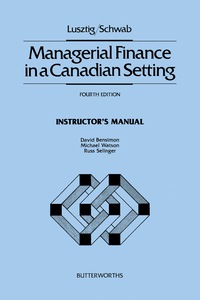
Company X is a privately held all-equity company which is expected to generate annual earnings before interest and taxes (EBIT) of $16,650,000 indefinitely. The company is in 30% marginal tax bracket. Because the company is privately held, we do not have a direct estimate of its annual appropriate discount rate. However, information of the company's two closest publicly traded competitors is in the table below and we believe that we can use the average of their unlevered returns as the unlevered return of Company X. Competitor 1 Competitor 2 Debt-to-value ratio 0.2 not reported Debt-to-equity ratio not reported 4 Tax rate 28% 32% Yield to maturity of debt 4% 8% Equity beta not reported 1.744 Weighted average cost of capital 8.496% not reported Furthermore, the annual risk-free rate is 3% while the annual expected return of the market portfolio is 8%. The capital asset pricing model (CAPM) is the valid asset pricing model. a. Calculate the value of Company x.4 b. Company X decides to go through a restructuring such that it carries $1 of debt for every $3 of equity. The yield to maturity of the company's debt is 6%. Calculate the value of Company X.5 C. Company X is considering a project that costs $800,000 today and is expected to generate an annual unlevered cash flow (UCF) of $116,550 indefinitely. The project is going to be financed using debt and/or equity while maintaining the company at its current capital structure (as in part b). C1. Calculate the NPV of this project using the weighted average cost of capital (WACC) approach.6 22. Calculate the amount of debt and the amount of equity Company X needs to issue in order to finance this project.? C3. Confirm your answer in part C1 using the flow to equity (FTE) approach.8 d. After it undertakes the project in part c, Company X goes through another restructuring such that it becomes all equity again. Calculate the value of Company X. Company X is a privately held all-equity company which is expected to generate annual earnings before interest and taxes (EBIT) of $16,650,000 indefinitely. The company is in 30% marginal tax bracket. Because the company is privately held, we do not have a direct estimate of its annual appropriate discount rate. However, information of the company's two closest publicly traded competitors is in the table below and we believe that we can use the average of their unlevered returns as the unlevered return of Company X. Competitor 1 Competitor 2 Debt-to-value ratio 0.2 not reported Debt-to-equity ratio not reported 4 Tax rate 28% 32% Yield to maturity of debt 4% 8% Equity beta not reported 1.744 Weighted average cost of capital 8.496% not reported Furthermore, the annual risk-free rate is 3% while the annual expected return of the market portfolio is 8%. The capital asset pricing model (CAPM) is the valid asset pricing model. a. Calculate the value of Company x.4 b. Company X decides to go through a restructuring such that it carries $1 of debt for every $3 of equity. The yield to maturity of the company's debt is 6%. Calculate the value of Company X.5 C. Company X is considering a project that costs $800,000 today and is expected to generate an annual unlevered cash flow (UCF) of $116,550 indefinitely. The project is going to be financed using debt and/or equity while maintaining the company at its current capital structure (as in part b). C1. Calculate the NPV of this project using the weighted average cost of capital (WACC) approach.6 22. Calculate the amount of debt and the amount of equity Company X needs to issue in order to finance this project.? C3. Confirm your answer in part C1 using the flow to equity (FTE) approach.8 d. After it undertakes the project in part c, Company X goes through another restructuring such that it becomes all equity again. Calculate the value of Company X







